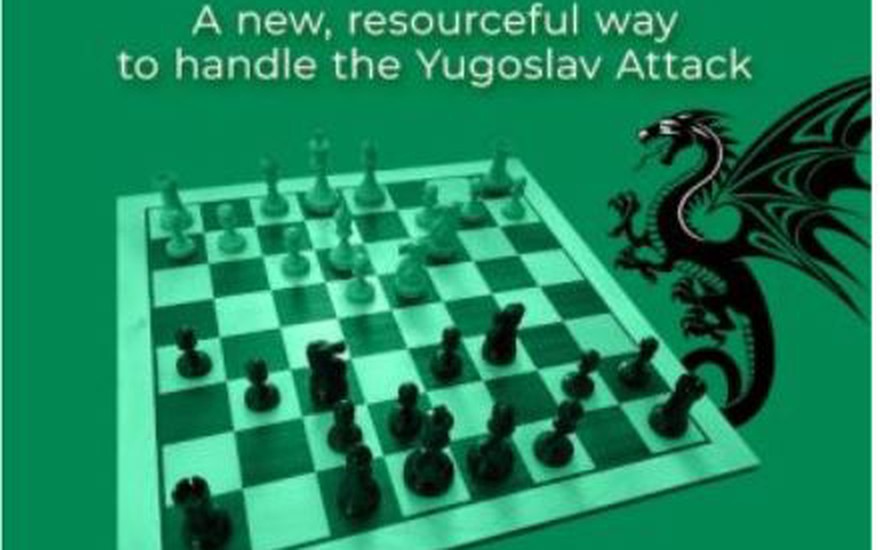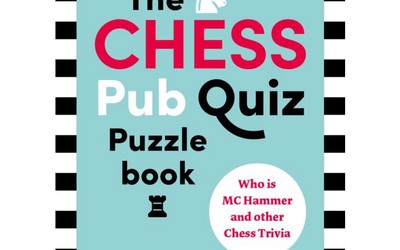
Review: The Hungarian Dragon by Junior Tay
A review by FM James Vigus of Junior Tay's 'The Hungarian Dragon'The Hungarian Dragon
By Junior Tay
CarstenChess – Opening Hacker Series, 2022
120 pages, softback
This book is subtitled ‘A new, resourceful way to handle the Yugoslav Attack’ (with ‘creative’ rather than ‘new’ on the inside title page). It provides a repertoire for Black after 1 e4 c5 2 Nf3 d6 3 d4 cxd4 4 Nxd4 Nf6 5 Nc3 g6 6 Be3 Nc6 7 f3 h5, a startling system that has been used by the Hungarian star Richard Rapport, hence the name the variation has acquired.
Tay, an author of several previous books for Everyman Chess, is a Senior International Master at correspondence chess. However, it is in online blitz that he has used this variation with success. Several of his games on chess.com are cited here, and despite the fast time controls, they are impressive. Since the Hungarian Dragon has not yet been tested extensively in classical chess, quite a bit of the material here comes from online play. Nevertheless, the soundness of the Hungarian Dragon seems well enough proven by the fact that engines have not found a clear route to a White advantage. (Chapter 16 presents some engine games.)
Here are the contents:
3 Introduction
8 Chapter 1: The Move Order
11 Chapter 2: The purpose of pushing the h-pawn and not
15 Chapter 3: 10.Be3 with 12.Be2
21 Chapter 4: 10.Be3 with 12.Bb5+ and 14.Ba4
27 Chapter 5: 10.Be3 with 12.0-0-0, 13.Bb5+ and 16.f4
34 Chapter 6: 10.Be3 with 13.Kb1, 14.a3, and 16.h3
39 Chapter 7: 10.Be3 - Move order issues (why 11...Be6 is preferred over 11...a6 and 11...Qa5)
48 Chapter 8: 10.Qf2 with 11.Bc4
57 Chapter 9: 10.Qf2 with 11.Bb5+
62 Chapter 10: 10.Bb5+ with 11.Qd3 Bc6!
70 Chapter 11: 10.Bb5+ with 11.Bxd7+ - The critical line
75 Chapter 12: 9.Qxd4
79 Chapter 13: 8.Bc4 with 11.Bb3
88 Chapter 14: 8.Bc4 with 11.Be2
93 Chapter 15: 8.Bc4 with 11.Bd3
99 Chapter 16: The Hungarian Dragon in top chess praxis [engine games]
109 Chapter 17: Thematic Exercises
114 Chapter 18: Answers to Thematic Exercises
119 About the Author
This slim volume should be a boon to Dragon players. In my review of Anish Giri’s recent Dragon repertoire I mentioned the dilemma that Black faces in response to the critical Yugoslav Attack: either enter the traditional, theory-heavy lines, which are objectively dangerous, or use Giri’s early ...Nxd4, which is far safer but also tamer. Now Tay presents a third option, ideal as a surprise weapon and arguably suitable even as a first-choice line, one that considerably reduces the memorization required of Black. Indeed, one use of this repertoire would be to learn a reply to the Yugoslav quickly, to buy time for delving into other, more complex theory later.
Tay regularly cites the analysis of GM Chris Ward on the chesspublishing.com website, and Ward also has a section on the Hungarian Dragon in his ChessBase DVDs on the Dragon. Some sense of Ward’s coverage can be gained from free ChessBase videos in which he broadcasts regular Dragon updates. However, I am unable to compare Tay’s coverage with Ward’s directly. In any case, this is a new opening line with very little established theory. It’s striking that the Hungarian Dragon is not even mentioned in Ivan Saric’s new Chessable repertoire for White with the Open Sicilian – even though Saric was Rapport’s highest-profile victim in a blitz game (see below).
The first point of Black’s system appears with the sequence 8 Qd2 (White tries business as usual) 8...Nxd4 9 Bxd4 Bh6!, developing with gain of tempo, and now White has the slightly uncomfortable choice of either exchanging the bishop that has already moved twice with 10 Be3, or moving the queen (with or without the insertion of Bb5+) in which case immediate long castling is no longer possible.
The following game gives a vivid demonstration of Black’s opportunities, especially using the advanced h-pawn:
It’s also noteworthy how often the black king’s rook springs out to h5, and then round to c5 to support the Dragon exchange sacrifice on c3 – a manoeuvre we get the chance to practice in Tay’s brief but excellent quiz chapter.
Throughout most of the book, Black enjoys pleasant play with good attacking chances. Tay’s explanations are consistently both concise and helpful.
A couple of the more critical lines are as follows:
8 Bc4 is what Tay considers best for White. After 8...Bd7 9 Qd2 Bg7 (taking on d4 is no longer so attractive) 10 0-0-0 Na5!? and now Tay examines White’s three most logical bishop retreats in separate chapters. I didn’t see anything particularly alarming for Black here.
8 Qd2 Nxd4 9 Bxd4 Bh6 10 Bb5+ Bd7 11 Bxd7+ Nxd7 12 Qf2 0-0 13 0-0 looks a more obviously critical try to me, and after 13...a6 14 Rad1 Rc8 15 f4 Tay admits that Black’s position feels ‘a trifle uncomfortable’, but finds a counter involving ...e6 and ...f5 that appears robust enough.
Indeed, a common theme is that Black needs a flexible mentality regarding the pawn structure: sometimes queenside expansion is best, sometimes a Najdorf-style ...e5, sometimes Black must be prepared to allow double f-pawns, and so on.
Readers who are prepared to adopt that kind of flexible approach will surely enjoy trying out this well-organised and fresh repertoire.
More blog posts by Minckwitz

Review: The Perfect Pirc-Modern by Viktor Moskalenko
This is a review by FM James Vigus of Moskalenko's The Perfect Pirc-Modern
Review: Some instructional and training works
Review by FM James Vigus of recent training/calculation books
Review: Basman's Folly (1 g4) by Lakdawala and Hansen
Review by FM James Vigus of Lakdawala & Hansen's book on the Grob